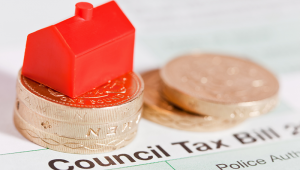Public bodies spend £765m a year on printing, stationery and general office expenses, and almost £1.5bn on computers. Some pay more than others for the same things, but just signing up to a collaborative procurement arrangement with your neighbours won’t necessarily save you money unless you manage it well, says John Kirkpatrick at the Audit Commission
We might regret it on green grounds, but paper remains a staple of office life. Public bodies buy and consume reams of it. Paper can vary, in weight, absorbency, aptness for colour printing and so on, but it is fundamentally the same product. The A4 printer paper council X needs is going to be the same as the one council Y uses.
The Audit Commission and the National Audit Office have been looking at the prices councils pay for the basics of administration, such as paper. We found a council paying nearly 50% more than another for essentially the same box. The highest price paid for an LCD computer screen was 143% more than the cheapest.
We examined councils’ procurement of ten common buys, including A4 copier and printer paper, mailing envelopes, printer cartridges, LCD flat screen monitors and car hire. In most cases, councils bought these products through some kind of collaborative arrangements. But still the prices they paid varied. Five reams of photocopier paper cost different councils anything from £8.61 to £12.75. And we found variation in the prices paid for other basics, from envelopes to car hire.
It is hard to believe that all that variation can be justified – some councils are clearly paying more than they need to. And sometimes we even found that people who did not buy collaboratively achieved lower prices than some who did.
One of few certainties for councils over the coming months is that the financial settlement for 2011/12 is going to be even tougher than for 2010/11. And the new government expects public services to make savings.
Councils will look for savings that don’t hurt frontline service delivery. So savings through better buying always will look attractive, because they don’t involve reducing staff numbers. Logically, collaboration should help councils buy more cheaply by capturing economies of scale.
The Operational Efficiency Programme set in train by the Treasury under the former government estimated the public sector could save £5.7bn by 2011/12 through increased collaborative procurement. This could rise to £7.7bn by 2013/14.
Collaborative procurement isn’t a new idea. Already 45 of the 48 authorities responding to our survey used some form of it in the past year. Unsurprisingly, they said that lower prices and greater efficiency were the main benefits achieved. These happened partly because of scale and partly by drawing on the expertise in other public bodies or professional buying organisations.
Councils also thought it enabled faster and cheaper procurement, allowing staff to concentrate on more complicated or strategically important procurement or commissioning. But most councils can’t tell if they are buying more efficiently through collaborative procurement because they are not accurately measuring the costs of letting contracts. And the variation in prices we found suggests that the potential benefits are not being realised.
Why not? Some may be specifying higher quality than they really need. Others that buy through so-called framework agreements are not always getting the benefits of collaboration. Unless they combine orders or commit to buying volumes in advance, the discounts they receive reflect only the size of their order, not everything bought by all collaborators. So the public sector is not getting the leverage it could from the great volumes it buys.
Savings from buying stationery or computer equipment more cheaply may seem modest. But local public bodies spend £765m yearly on printing, stationery and general office expenses, and almost £1.5bn on computer costs. If similar price variation exists across much of this spending, tens if not hundreds of millions of pounds of savings could be made if those who are spending most could get the best prices available. And these are the sorts of purchase where councils are least likely to be compromising other objectives – sustainability or local sourcing for example – by getting the best price.
Just entering more collaborative arrangements will not necessarily yield those savings. Councils need to ensure that they make these arrangements work for them. Ensuring that they are part of the right buying groups, managing specifications carefully, and aggregating volume effectively could all help. They need to collaborate more effectively, not just collaborate more.











